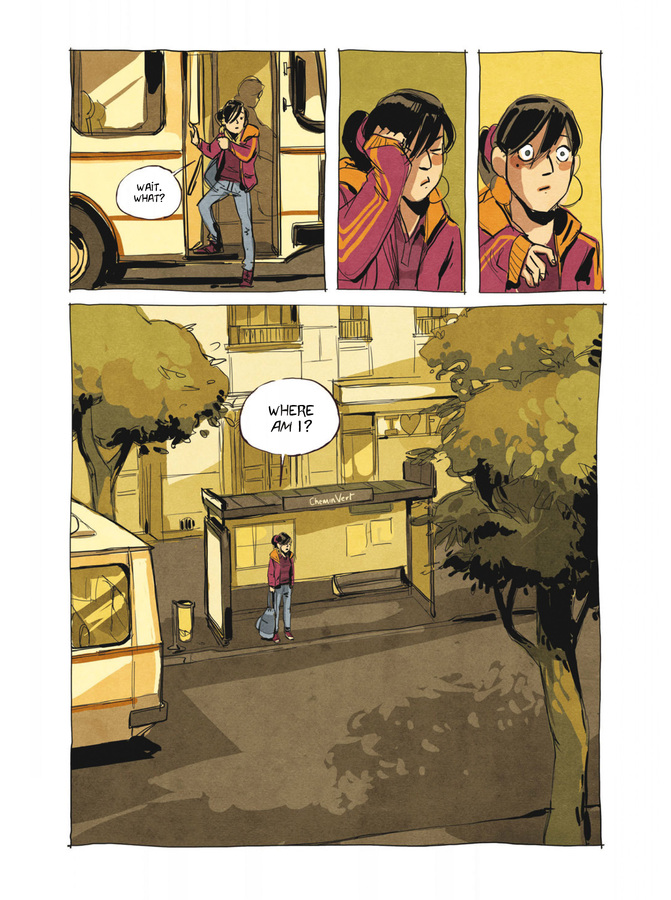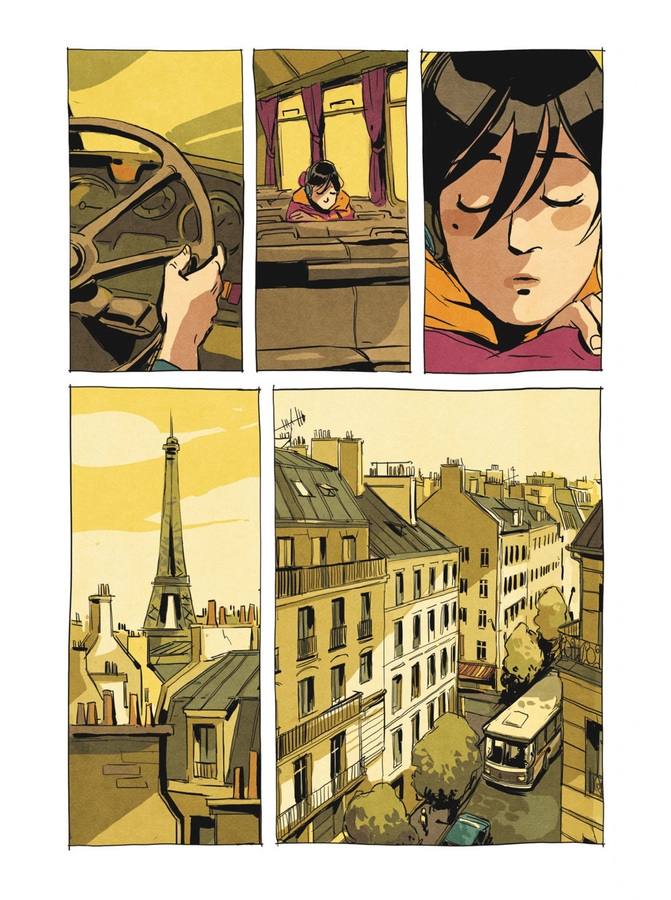What would you do if your teenage self showed up on your doorstep? What would you say? How would you respond? It’s an interesting question and a concept that we often think about: “If only I knew then, what I know now?” Now, what if I said there is a book where that exact premise plays out?
For Luisa Arambol, this is not a dream scenario; it’s her reality.
Luisa: Now and Then is a translated graphic novel originally penned and illustrated by French auteur Carole Maurel and translated by Mariko Tamaki. This story unfolds cinematically with a young woman who falls asleep on a Metro bus, only to awaken to the bustling streets of Paris. She sleepily stumbles around and realizes that this is indeed the wrong stop.
A fairly relatable occurrence, right? Who hasn’t taken the wrong exit or caught the wrong train—yet this is happenstance is anything but ordinary.
For the time period that this young woman harks from is the mid-1990’s and, for those of us old enough to remember, some technological advances have been made since then. The world she awakens to is recognizable enough with minute differences enough to make her question her surroundings, as well as her sanity. The currency exchange in France has shifted from Franc to Euro, computers have become smaller, everyone seems to use a mobile phone, and where are the flying cars we were promised?! Help comes in the form of a seemingly random stranger that purchases a phone card for her, then offers to aid in the search for a relative that possibly lives in the city. Following a rapid turn of events, it is revealed that this stranger’s next door neighbor and this out of place young woman, in fact, have the same name: Luisa Arambol.
Soon after the realization wears off, younger Luisa discovers her future self and life to be lackluster. It is lonesome, with a handful of friends, and with a less than appealing job than she imagined ending up in. A scenario not usually considered when wishing we could speak to our younger selves. How would our adult lives add up when compared to the dreams we had as teenagers?
As the story progresses, via a series of flashbacks and visual cues, it becomes evident how Luisa’s current and former interpersonal situations mirror each other—a brilliant device to illustrate how both Luisas haven’t been honest or forthcoming with their own heart.
If the story hasn’t grabbed your attention, the art alone will draw you in.
Luisa: Now and Then is visualized with a cinematic scope, from aerial perspectives of the city to fluid tracking shots of characters as they exist in their surroundings. The present time period is told through vibrant washes of color combined with a vast sense of space and a strong sense of place. On the other hand, the past is informed through muted tones of grey with an underlying feeling of constraint with closely cropped panels. Both processes beautifully echo the characters and their stations in life through these moments.
The publisher, Life Drawn, is a brand new imprint from Humanoid Comics, an international publisher with over forty years of experience and a reputation for producing high caliber, progressive graphic novels. Life Drawn’s mission is to focus on stories with diverse or political content and their release of Luisa: Now and Then definitely fits the criteria. Talented author and illustrator Carole Maurel renders her life’s work in storyboard and 2D/3D animation. And Mariko Tamaki, its translator, not only is an artist and author in her own right, but has written for many popular titles, such as: Lumberjanes, She-Hulk, Supergirl, and 2019’s highly anticipated coming of age story, Harley Quinn:Breaking Glass.
Both Maurel and Tamaki’s talents blend together seamlessly to breathe life into the beautiful and timely story of Luisa.
Luisa Now and Then is not just simply a graphic novel. It is a tale about self transformation, about how through the years, with acquiring life experience, one can learn to hide their true self as a means of self protection; potentially, a sudden life event may bring about an awareness that can lead to self reflection and possibly a positive life change. When reading it, I found myself pausing and contemplating the characters’ respective situations in relation to my own. So, check this out and you may find yourself having a conversation with who you are now and with who you were then.
-Ilka Iwanczuk is a Reader's Services Assistant at Lawrence Public Library.





Add a comment to: Find Yourself Inside Luisa: Now and Then